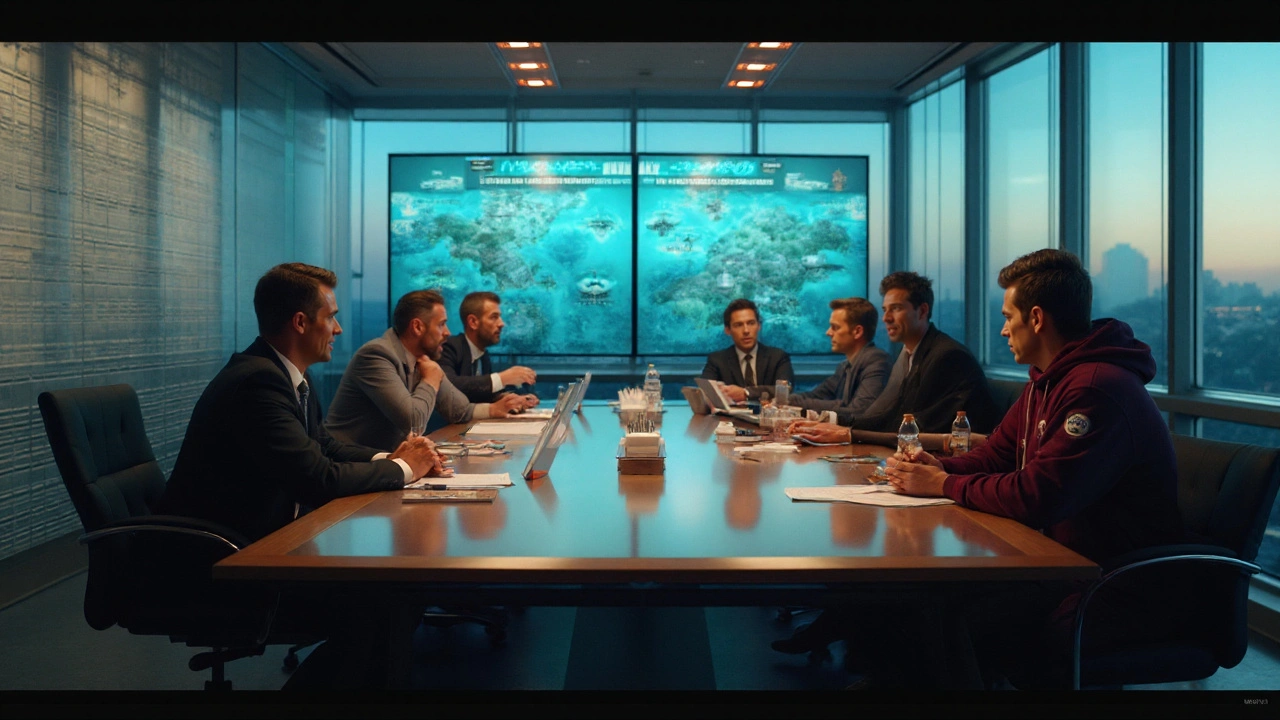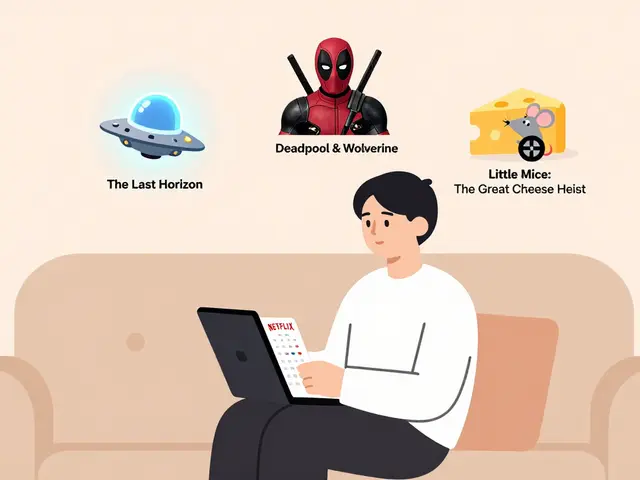26
What Is Film Marketing Strategy? Practical Guide with Steps, Examples, and Checklists

Trailers don’t sell tickets by themselves. A sharp plan does. If you’re wondering what a film marketing strategy actually is, think of it as the blueprint that gets the right audience to care at the right time-then moves them to watch, pre-order, or show up on opening night. This guide sets a realistic bar: you won’t beat a blockbuster budget, but you can outsmart it with tight targeting, great creative, and good timing.
Here’s what most readers want to do after clicking this title: define the term in plain English, learn the steps to build one, see a few realistic examples, grab a checklist they can use tomorrow, and clear up the fuzzy stuff like windows, budgets, and what to track. You’ll get all of that below.
TL;DR: What a Film Marketing Strategy Really Is
- Definition: A film marketing strategy is the end-to-end plan for positioning your movie, choosing the audience, crafting the hook, sequencing your marketing beats, picking channels, setting budget and goals, and measuring what worked so you can adjust fast.
- Core jobs-to-be-done: 1) Nail the hook and target. 2) Decide release path and windows. 3) Build assets that travel (teaser, trailer, key art, social). 4) Plan the media mix and PR. 5) Forecast, budget, and track. 6) Pivot based on data.
- What it includes: audience and comps, positioning and message, asset plan, channel mix, calendar, budget (P&A), KPIs, and contingency plans.
- Timeframe: Start 6 months out for indie, 9-12 months for studio. Expect a ramp: tease, trailer, on-sale, opening, and long tail (PVOD/TVOD/SVOD/AVOD or FAST).
- Reality check: Great creative beats bigger spend if you’re surgically targeted. Poor positioning wastes money fast.
Step-by-Step: Build a Film Marketing Strategy That Works
I’m going to walk you through a lean, practical process. Keep it scrappy, test early, and keep receipts on what moves the needle.
Clarify the hook and who it’s for
Start with a one-sentence promise. What will viewers feel or learn? Then write a tight logline and a 10-word tagline. Define your “ICP” (ideal cinema-goer persona): age, psychographics, favorite platforms, top 5 comparable titles they watched. If you can’t write this, you’re not ready to spend.- Heuristic: If your hook doesn’t fit on a poster, it won’t travel on social.
- Quick test: Show two taglines to 20 real targets (Discords, subreddits, fan groups). Pick the one that survives public roasting.
Pull comps and size the opportunity
List 5-10 comparable films by genre, tone, cast size, and release path. Use MPA Theme Report (2023 for market size), Comscore for box office, and platform top-10 data where available.- Back-of-napkin model: TAM (total addressable market) = median opening weekend admissions for your top 5 comps × your likely screen count share × your region factor.
- For streaming-first: TAM = MAUs of target platforms × reach of your niche communities × realistic view-through (1-3%).
Pick the release path and windows early
Your marketing beats hinge on windowing. Common paths:- Festival → Sales agent → Limited theatrical (1-4 weeks) → PVOD (premium rental) → SVOD/AVOD/FAST
- Direct-to-PVOD/TVOD → SVOD/AVOD if theatrical is unlikely
- Platform original (distribution and marketing handled by the buyer)
Know your timing: theatrical campaigns are front-loaded; PVOD/TVOD depends on paid search and YouTube intent; SVOD/AVOD leans on platform push and PR.
Positioning and messaging
Write one core value prop per segment (e.g., genre superfans, cast fans, niche communities). Build a simple messaging matrix:- What’s the promise? (emotion, insight, spectacle)
- What’s new or different?
- Proof points (reviews, festival laurels, cast credibility)
- Where and when to watch (clear CTA)
Test 3 poster comps and 2 trailer openings in small paid social A/Bs. Kill weak angles early.
Asset plan that actually ships
Minimum viable stack:- Teaser (15-30s), trailer (2-2:30), key art (poster + thumb), 8-12 social cutdowns
- EPK: press notes, stills, BTS, director statement, cast bios
- Social templates: quotes, countdowns, on-sale tiles, story stickers, YouTube thumbnails
- Cast-ready packs: pre-written captions, sized assets, posting schedule
Tip: Your YouTube thumbnail is a mini poster. Design it intentionally, not as an export of the key art.
Channel mix by phase
Break your calendar into phases with clear goals:- Tease (T−16 to T−10 weeks): goal = awareness. Channels: PR soft beats, first-look stills, teaser on YouTube and TikTok, Letterboxd list building, newsletter signups.
- Trailer drop (T−10 to T−6): goal = interest. Channels: YouTube pre-roll, TikTok/IG Reels, earned press, influencer seeding, podcast tours. Start paid search on title and cast.
- On-sale (T−6 to T−2): goal = conversions. Channels: ticketing partner placements, social ads optimized for “Get Tickets”, geotargeting near theaters, retail tie-ins if relevant.
- Opening + sustain (T−2 to T+2): goal = urgency and social proof. Channels: review quotes, audience reactions, street teams near theaters, lookalikes from purchasers.
- Home release (PVOD/TVOD/SVOD/AVOD): goal = reach + reactivation. Channels: retarget trailer viewers, paid search on “watch [Title]”, new thumbnails, platform PR.
Budget the right way (P&A)
Rules of thumb:- Creative production: 10-15% of total P&A (don’t skimp on key art or trailer edit).
- Paid media: 60-75% of P&A (weight to YouTube, TikTok, paid search, and geotargeted social).
- PR, events, influencers: 10-20% (varies with cast availability).
- Contingency: 5-10% (crisis, creative refresh, extra showtimes).
Unit economics check: If average theatrical ticket nets you ~$6 after splits and fees, and your conversion from trailer view to ticket is ~1%, your break-even CPV needs to be ≤$0.06. On streaming, back into revenue per view (license or AVOD CPM share) and keep CPV below that.
Timeline with beats that matter
Sketch a Gantt from T−24 to T+4 weeks. Anchor dates:- Teaser release
- Trailer + key art reveal (with exclusive to a top outlet if possible)
- On-sale date (buy tickets now)
- Press junket, podcasts, late-night (or creator collabs if no broadcast)
- Advance screenings and influencer nights
- Embargo lift (stack positive quotes within 24 hours)
- Opening weekend call-to-action
- Week 2 messaging shift (highlight audience reactions, awards buzz)
- PVOD/TVOD drop, then streaming premiere
Measurement and analytics
Set up UTMs for every link. Pixel your site. For theatrical, coordinate tracking with ticketing partners and theaters where you can. KPIs by phase:- Awareness: impressions, trailer views (3s, 10s, 25%, 100%), search lift on title
- Consideration: social engagement rate, page visits, add-to-calendar, wishlists
- Conversion: ticket clicks, pre-orders, opening weekend admissions by DMA
- Retention/long tail: PVOD rentals, TVOD purchases, SVOD completion rate
Use brand lift surveys during the trailer window. Watch for cost spikes 48 hours after drop-refresh creative if fatigued.
Risk management
Have responses ready for leaks, review bombs, or cast unavailability. Pre-clear two alternate trailers and a backup key art. If a beat underperforms, shift spend to the best CTR/ROAS channel within 24 hours.
Authoritative data you can cite when stakeholders push back: the Motion Picture Association’s Theme Report (2023) shows theatrical admissions rebounding with global box office above $30B; Netflix’s 2024 “What We Watched” reports confirm long-tail viewing on platform; Nielsen’s The Gauge (2024) highlights streaming’s share of total TV time. These shape the mix, not the story you tell.

Examples: Studio vs. Indie (Budgets, Mix, Outcomes)
Two simplified scenarios to show how this plays in the real world. Not fantasy numbers-these are in the ranges I’ve seen across campaigns.
Scenario A: Mid-tier studio action thriller (2,000 screens)
- Goal: $12-15M opening weekend domestic.
- P&A: ~$15-$25M. Allocation: 12% creative, 68% paid media, 15% PR/events, 5% contingency.
- Channel focus: Heavy YouTube pre-roll, TikTok/IG short video, connected TV, paid search on title/cast, outdoor in top 10 DMAs, broadcast integrations.
- Beats: Supercut teaser T−16, trailer drop with exclusive, on-sale T−6, national press week T−3, fan screenings T−1.
- Measurement: Pre-awareness via brand lift, intent surveys in top DMAs, nightly admissions pacing from Comscore, creative refresh if weak quadrants lag.
What usually moves the needle: a high-impact trailer opening (first 5 seconds), cast-driven social, and critic pull quotes early Friday.
Scenario B: Indie documentary with niche community (30-80 screens, hybrid)
- Goal: Strong per-theater average (PTA), break-even P&A, build data assets for PVOD/SVOD.
- P&A: $80K-$300K. Allocation: 15% creative (doc posters matter), 55% paid (mostly social + YouTube + search), 20% PR/community, 10% contingency.
- Channel focus: Community orgs and newsletters, podcasters in the niche, TikTok for clips, YouTube pre-roll against relevant search, paid search on problems the doc solves.
- Beats: Festival premiere to get quotes, virtual Q&A nights with partners, street teams near art-house theaters, staggered PVOD/SVOD push.
What usually works: a blunt, benefit-forward tagline, a 60s trailer with a single compelling stat, and three creator partners who own the niche conversation.
| Channel/Metric | Typical Range (Indie) | Typical Range (Studio) | Notes / Source Context |
|---|---|---|---|
| YouTube CPV (skippable) | $0.02-$0.06 | $0.03-$0.08 | Platform rate cards + campaign logs |
| Paid social CTR (video) | 0.8%-2.5% | 0.6%-1.8% | Varies by creative; reactions lift CTR |
| Trailer view → ticket buy | 0.5%-1.5% | 0.8%-2.0% | Ticketing cohorts; opening urgency matters |
| PTA (limited opening) | $3K-$12K | $5K-$20K | Comscore and distributor reports |
| PVOD conversion (landing → rent) | 2%-6% | 3%-8% | Stronger with review quotes |
| Email open rate (fans) | 30%-50% | 25%-45% | House lists outperform rentals |
Use ranges, not wishes. If your math relies on best-case in every cell, it’s not a plan, it’s a hope.
Checklists, Heuristics, and Handy Templates
Here’s the grab-and-go section you can copy into your doc.
Pre-launch checklist (T−16 to T−6 weeks)
- Pick 5 comps and write down their opening weekend, PTA, marketing angles, and top reviews.
- Draft positioning and 3 taglines; test on small audiences.
- Lock key art concept and trailer structure; book your editor early.
- Build your email capture (simple landing page, one lead magnet like a behind-the-scenes clip).
- Plan creator outreach with a clear offer (early screener, interview with director, exclusive clip).
- Set analytics: UTMs, pixels, dashboards for weekly reporting.
- Schedule beats: teaser, trailer, on-sale, junket windows, PVOD/TVOD/SVOD dates.
On-sale to opening checklist (T−6 to T+1)
- Geotarget ads to theaters; use countdown creatives.
- Drop social proof fast: first reviews, audience reactions, awards laurels.
- Publish cast posting calendar with finalized assets and captions.
- Run paid search on "tickets", "showtimes", and title variants.
- Host at least one advance screening with a partner who can fill a room.
- Refresh thumbnails if CTR falls below 1% on YouTube or 0.8% on TikTok/IG.
Home release checklist
- Swap out theatrical CTA for "Watch at home" within 24 hours of PVOD drop.
- New 30-second spot that says exactly where to rent or stream.
- Retarget everyone who watched 25%+ of your trailer.
- Pitch long-tail press angles (craft, music, location stories).
- Stitch creator reactions and explainers for TikTok/Shorts.
Heuristics that save time and money
- 60/30/10 budget rule per phase: 60% on the best working channel, 30% on the runner-up, 10% on tests.
- 3H content mix: Hero (trailer), Hub (character/story mini-clips), Help (context or how-to if doc).
- Audience math: aim to capture emails equal to 2% of your TAM pre-release; those convert 2-4× better than cold audiences.
- Creative testing: 1,000 paid impressions per variant is enough to kill obvious losers.
- Break-even back-solve: (Expected net per ticket × target admissions) − P&A ≥ 0 before you commit to spend.
Simple planning template
- Goal: opening weekend admissions or PVOD revenue target
- Audience: primary, secondary, niche communities
- Hook: promise + proof
- Assets: list with owners and due dates
- Channels: by phase, with budgets and KPIs
- Calendar: beats with exact timestamps and exclusives
- Risks: top three with mitigation plans

Mini‑FAQ and What to Do Next
Is marketing different from distribution?
Yes. Distribution is how your film gets into theaters or platforms and under which terms. Marketing is how you get people to care and click "watch" or "buy." Some distributors handle both; many indies split the duties.
Do I need theatrical to succeed?
No. Theatrical is great for prestige, reviews, and later windows. But docs and niche films often win with a targeted PVOD/TVOD push and a strong SVOD deal later.
When should I hire a publicist?
For festivals: 4-6 weeks before your premiere. For release: 8-10 weeks before trailer drop. A good publicist earns their fee by framing the story and landing credible coverage.
How do I A/B test a trailer?
Cut two openings (first 5-10 seconds) and one alternate end card. Run both in small paid tests on YouTube and TikTok. Compare 25% and 100% view rates, CTR, and cost per 10-second view. Keep the better opener; you don’t need to rescore the whole thing.
Do festival laurels actually help?
Yes, if they’re recognizable. Use them early in the trailer and in thumbnails. Pair with a short quote that matches your positioning.
Should I be on Letterboxd?
If your audience skews cinephile, absolutely. Claim the film, seed stills, and engage respectfully. Watchlists are real intent signals.
Are billboards worth it?
If you’re wide in top DMAs and need stature, yes. For 30-80 screens, skip most outdoor and put the money into targeted video and search unless you have a hyper-local activation.
How do I work with cast on social?
Give them a kit: sized assets, short captions, story stickers, and 3 fixed posting dates. Don’t expect them to edit or write; do the work for them.
What should I track every week?
Topline: spend, impressions, trailer 25%/100% views, CTR, ticket clicks, and any pre-sale data by DMA. On home release: CPV, conversion rates, and revenue per view.
What if reviews are mixed?
Lead with audience reactions and specific strengths (performances, craft, a signature set-piece). Target fans who care about those strengths rather than chasing four-quadrant approval.
Next steps, based on where you are
- No distributor yet, festival on deck: Hire a publicist, polish a 60s festival trailer, build a simple landing page for email capture, and prep a one-sheet with comps and audience plan for buyers.
- Limited theatrical locked: Map theaters, build geotargeted campaigns, book advance screenings with local partners, and push on-sale hard with countdowns.
- Direct-to-PVOD/TVOD: Invest in YouTube and search; every asset must say exactly where to watch. Use creator explainers to add context in the first week.
- Platform deal signed: Coordinate beats with the platform’s internal push. You still need to prime your core audience; don’t leave it all to the algorithm.
Troubleshooting quick hits
- Trailer CTR is low: Swap the thumbnail and first 5 seconds. Add a bold quote or stat in the first frame.
- Ticket clicks but weak turnout: Shift budget closer to theaters, add a fresh quote spot, and retarget cart-abandoners with showtime-specific ads.
- High CPV on YouTube: Narrow targeting to intent keywords and channel placements; cap frequency; cut a tighter 15s.
- Creators not posting: Give them the angle that fits their audience and a firm date; offer a micro-exclusive (clip, interview, or giveaway).
- Reviews hurt the score: Lead with audience reactions and niche critics who genuinely liked the film. Don’t pick fights; pivot the message.
If you remember nothing else: decide who you’re for, say one clear thing, and time your beats so each one earns the next. Good marketing is a rhythm, not a blast.





